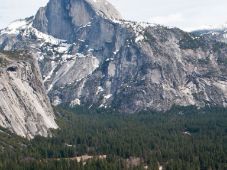To Help Prevent the Next Big Wildfire, Let the Forest Burn
By Ash Ngu and Sahil Chinoy, Nov. 29, 2018
Managing Forests through Prescribed Fire
Recently, because of the devastating wildfires in California and the federal government’s response to them, there have been numerous news articles and opinion pieces about the management of our ecosystems. While grasslands and shrublands are also burning across the state, there has been particular attention paid to the management of our forests. However, managing our forests is a complex problem and I found this recent opinion piece in The New York Times titled “To Help Prevent the Next Big Wildfire, Let the Forests Burn” an excellent overview of the issues involved in solving this problem.
Complete with straightforward graphics that follow you along as you read, the article starts by acknowledging that fire suppression policies have failed, in part because California’s forests have always burned, whether caused by Native American burning practices or lightning. One note here is that on the Central Coast, the frequency of lightning strikes is very low, so the majority of the fires were likely cause by Native American fire regimes. Recent research on fire scars on redwoods (Sequoia sempervirens) suggests our central coast forests burned roughly every 10 – 15 years – far too frequent for lightning strikes to be solely responsible.
Because of fire suppression policies, our forests are now overgrown; thus, there is more fuel to increase the possibility of high intensity catastrophic wildfires. Overgrown forests, coupled with the reality that more and more Californians are living near forests, and most fires are caused by humans, increases the risk of wildfires at wildland-urban interfaces. Permitted prescribed fires would help reduce fuel loads, yet our forests are owned by a combination of state and federal agencies, private corporations, and private individuals and families, which adds challenges to conducting prescribed burns over large areas. And finally, as our climate becomes hotter and drier our trees are dry and stressed, and many of them have died. This dead wood, if not cleared, adds to the severity of any fire.
Vegetation thinning, fuel reduction, and prescribed fire, as well as educating the public on the risks of living in wildland-urban interfaces, would go a long way to reducing the severity of wildfires. Implementing these management practices would begin the recovery of healthy and sustainable forests again.
Rick Flores
Director of Horticulture

